The Vivo X70 Pro+ is the brand’s latest flagship, complete with the top-of-the-line Snapdragon 888+ chipset and a 6.78-inch E5 AMOLED LPTO display, which brags 1,440 x 3,200 resolution and a refresh rate of up to 120Hz. Adding to the bells and whistles, the camera lenses are by Zeiss. This device is built to compete with the best offerings of Apple, Xiaomi, Samsung, and other top brands.
Vivo doesn’t have much to say about the audio specs, but there are two speakers — one top front firing and one bottom side firing. Let’s see how it fares in our rigorous audio test protocol.
Key audio specifications include:
-
Two speakers
- USB-C type connection
About DXOMARK Audio tests: For scoring and analysis in our smartphone audio reviews, DXOMARK engineers perform a variety of objective tests and undertake more than 20 hours of perceptual evaluation under controlled lab conditions. This article highlights the most important results of our testing. Note that we evaluate both Playback and Recording using only the device’s built-in hardware and default apps.
(For more details about our Playback protocol, click here; for more details about our Recording protocol, click here.)
Test summary
Scoring
Sub-scores and attributes included in the calculations of the global score.
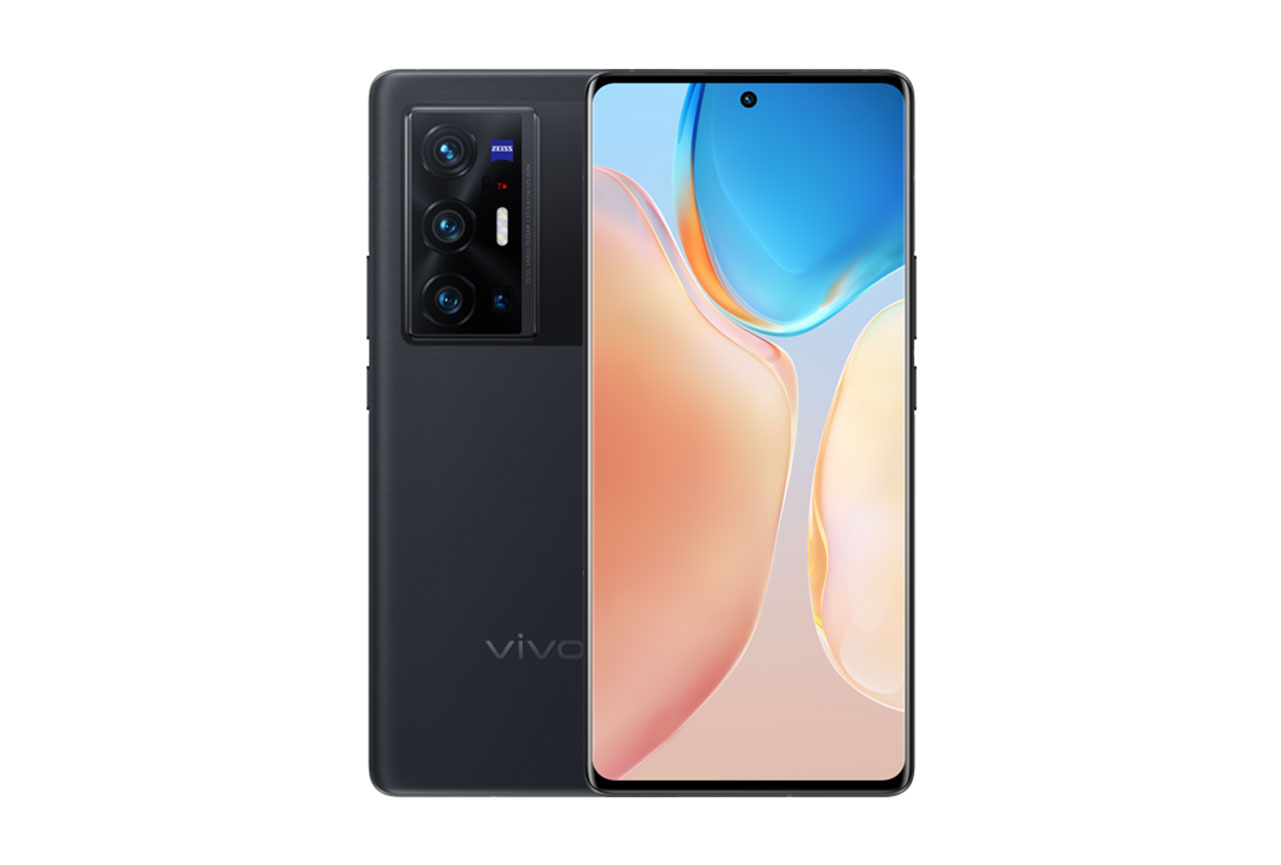
Vivo X70 Pro+


 158th
158th 84th
84thPlayback
Pros
- Better tonal balance than its predecessor, the X60 Pro+ and other X70 line devices
- Good balance performance
- Almost artifact free
Recording
Pros
- Very good signal-noise reduction (SNR) in all use cases; very intelligible voices
- Good rendition of the audio envelope
- Great overall spatial performance
- Great recording loudness
Cons
- Muffled and muddy sounds
- Background rendition impaired by noise reduction
With an overall Audio score of 66, the Vivo X70 Pro+ far outpaced its predecessor, the X60 Pro+ 5G, which scored a 51, putting it toward the very bottom in audio performance in our audio database for Ultra-Premium smartphones. At 66, the X70 Pro+ moves into average territory, alongside such models as the Sony Xperia 1 III and Samsung Galaxy S20+, both of which scored 66 as well.
The Vivo X70 Pro+ has two speakers, which helps boost its playback performance over that of the X70 Pro in a number of ways, including a better distribution of frequencies, but it still shares some flaws with the less expensive device, and the tonal balance remains very midrange focused. There’s more bass (but still not enough) and the high-end is largely missing in action. In general, the Vivo device earned average scores, but was notably excellent in the artifacts attribute, showing almost no perceivable artifacts.
As a recording device, the Vivo X70 Pro+ performed fairly well. It scored well in the timbre attribute, although it needs more bass and treble, and it had exceptional scores in the dynamics and volume attributes. The only attribute where it wasn’t at least average was in background, where it even failed to meet the score set by the X70 Pro. Overall though, recording flaws are minor. This Vivo device is a very useful tool for recording in a variety of scenarios.
Sub-scores explained
The DXOMARK Audio overall score of 66 for the Vivo X70 Pro+ is derived from its Playback and Recording scores and their respective sub-scores. In this section, we’ll take a closer look at these audio quality sub-scores and explain what they mean for the user.
Playback

Timbre
Vivo X70 Pro+
60
89
Timbre tests measure how well a phone reproduces sound across the audible tonal range and takes into account bass, midrange, treble, tonal balance, and volume dependency.
As with the X70 Pro, the X70 Pro+ produces correct treble in general but lacks high-end extension. The midrange is also correct, but it doesn’t have the richness or fullness achieved by the better scoring devices in our database. The bass is more defined than that of the X70 Pro, but the lack of low-end extension robs tonal balance of needed depth. Bass notes are barely discernible on some content.
Compared with the top-scoring devices, the tonal balance of the Vivo device is very midrange focused. At soft volumes, tonal balance lacks brightness and definition because of the lack of high-end extension.
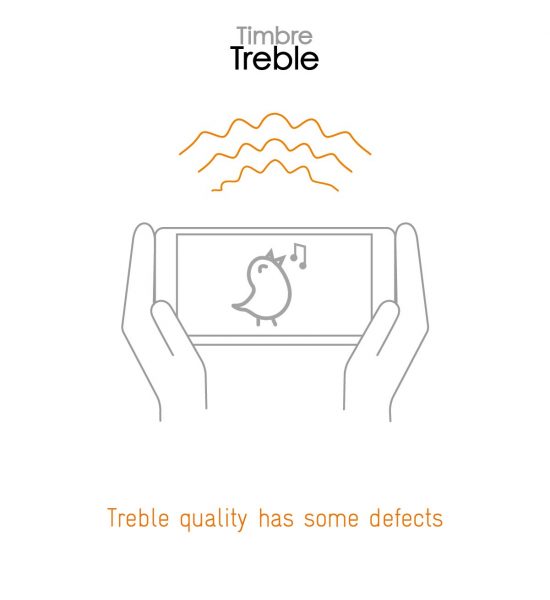
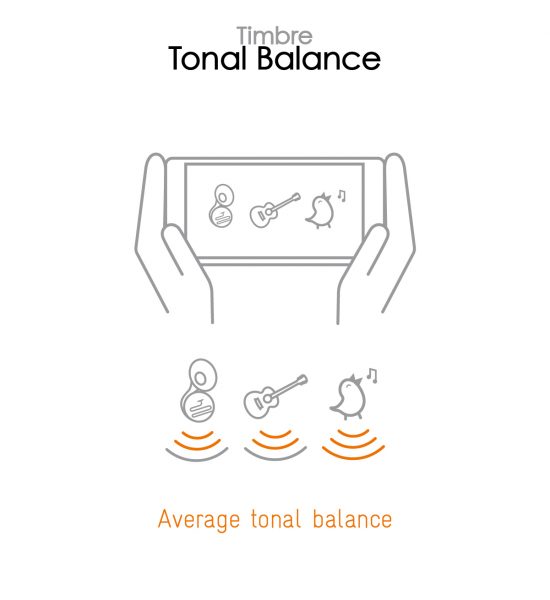

Dynamics
Vivo X70 Pro+
61
81
DXOMARK’s dynamics tests measure how well a device reproduces the energy level of a sound source, and how precisely it reproduces bass frequencies.
The dynamics score again is about average. Attack is just sufficient, nothing more. There is more bass presence and low-end extension than with the X70 Pro, and thanks to that, sustain and decay are correct, but bass attack is still pretty haphazard, and the bass envelope isn’t all that precise.
Punch is just decent when compared with the X70 Pro, but it is still not enough to give the proper sense of impact.

Spatial
Vivo X70 Pro+
51
88
The sub-attributes for perceptual spatial tests include p, balance, distance, and wideness.
The X70 Pro+ is a big step forward over the X70 Pro, which scored a meagre 21 points in this attribute. Balance is good, and centered elements are well-rendered. Distance perception is also good. In movies, voices are perceived at screen position.

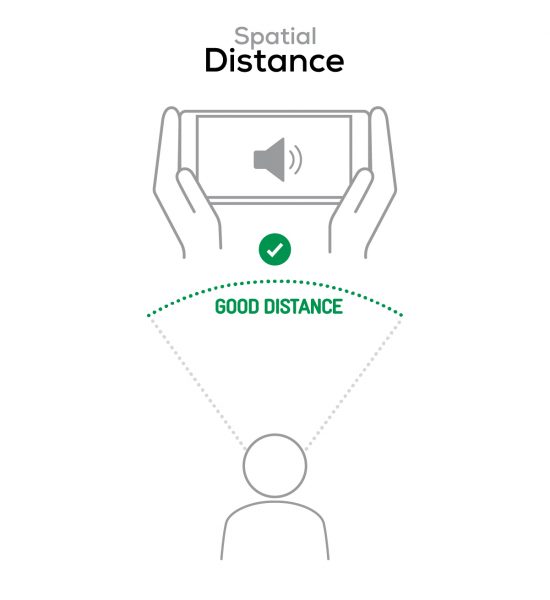
Despite having two speakers, the Vivo device doesn’t have much wideness — it barely reaches the smartphone’s physical dimensions, which doesn’t help with localizability, which is a bit blurry overall.

Volume
Vivo X70 Pro+
64
91
Volume tests measure both the overall loudness a device is able to reproduce and how smoothly volume increases and decreases based on user input.
The loudness is a notch above average at maximum volume; a slight improvement over the brand sibling X70 Pro. The first (minimal) volume step is well-defined and usable.
| Hip-Hop | Classical | |
| Vivo X70 Pro+ | 72.4 dBA | 73.8 dBA |
| Sony Xperia 1 III | 74.2 dBA | 67.9 dBA |
| Vivo X51 5G | 71.3 dBA | 70.4 dBA |

Artifacts
Vivo X70 Pro+
94
113
Artifacts tests measure how much source audio is distorted when played back through a device’s speakers. Distortion can occur both because of sound processing in the device and because of the quality of the speakers.
The Vivo device notches an impressive score in the artifacts attribute, putting it among the top devices we’ve tested in this category. There is some very slight compression at maximum volume on some content, but other than that no particular perceptual artifacts were noted.
Recording

Timbre
Vivo X70 Pro+
73
91
Like its less expensive brand sibling, the X70 Pro+ performed ably as a recording device, and in the case of this smartphone, earned an above-average overall score, although its score in the timbre attribute hovers in average territory. On the plus side in recording timbre, the X70 Pro+ offers good bass rendition with a fairly good low-end extension, even in high sound pressure level scenarios.
But like its brand sibling, ultimately the Vivo X70 Pro+ is lacking in both bass and high-end. On the other hand, there’s an excess of low-mids that induces a lack of clarity. The Vivo device produces a pleasantly warm sound, but tends to sound muffled among all use cases.
Also across use cases, the X70 Pro+ suffers from a lack of treble, which is heavily impaired by midrange rendition. The device tends to sound tinny and aggressive because the rendition of sibilances creates hissing. With the lack of high-mids and the excess low-mids, the Vivo produces a dark and canny sound that doesn’t do justice to voice-based content, even in high SPL scenarios.

Dynamics
Vivo X70 Pro+
78
81
The Vivo device earned an excellent score in the dynamics category, matching some of the top performers in the database to this point. Across use cases, the Vivo X70 Pro+ demonstrates excellent management of signal-to-noise ratio (SNR) thanks to efficient noise reduction, preserving voices while eliminating unwanted background. This was a strong suit for the X70 Pro as well.
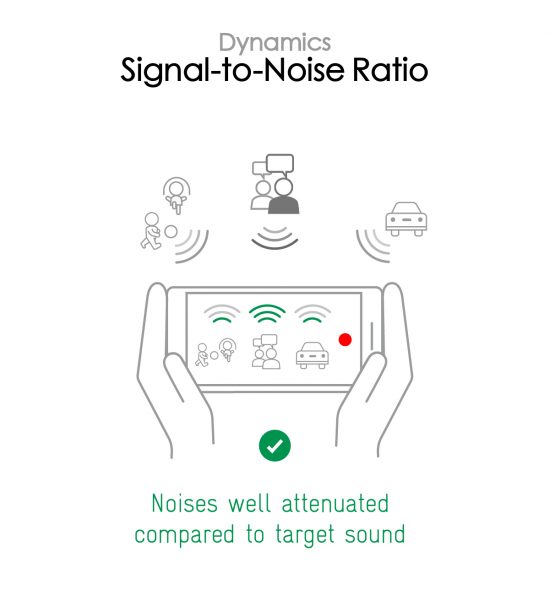
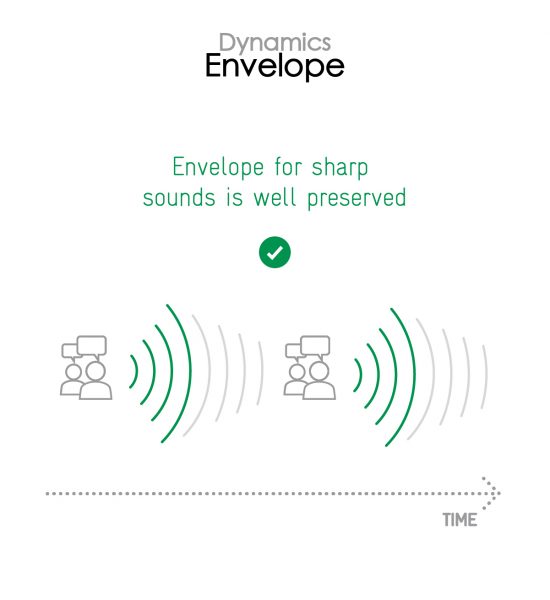
The X70 Pro+ produced great envelope rendition, despite its timbre performance, improving voice intelligibility, even in high SPL use cases. The memo app was the exception; in that case, the envelope was not as well rendered — but it was still good.

Spatial
Vivo X70 Pro+
67
78
In the recording spatial attribute, across use cases, the Vivo X70 Pro+ demonstrated very good wideness. Great localizability and distance rendering helps improve intelligibility of voices.

Volume
Vivo X70 Pro+
85
99
The Vivo X70 Pro produces excellent recording loudness. Here are our test results, measured in LUFS (Loudness Unit Full Scale); as a reference, we expect loudness levels to be above -24 LUFS for recorded content:
| Meeting | Life Video | Selfie Video | Memo | |
| Vivo X70 Pro+ | -23.1 LUFS | -18 LUFS | -16.7 LUFS | -18.6 LUFS |
| Sony Xperia 1 III | -30.5 LUFS | -22.4 LUFS | -20.2 LUFS | -21.3 LUFS |
| Vivo X51 5G | -29.2 LUFS | -24.1 LUFS | -20.5 LUFS | -23.7 LUFS |

Artifacts
Vivo X70 Pro+
74
97
The Vivo X70 Pro+ lands in average territory in this attribute. There are slight distortions and some slight pumping effects on the loudest contents, such as shouting voices. Very few artifacts were noted in high-SPL use cases. The noise reduction creates some phasing issues in background rendition.
You can listen for artifacts yourself in this sample recording:

Background
Vivo X70 Pro+
30
60
Somewhat strangely, the Vivo X70 Pro+ had a lower score than its less expensive brand sibling, which earned a 38 in this attribute. That said, across all the use cases, the X70 Pro+ produced quite natural background rendition, despite a lack of bass and treble, and an overarching dark and muffled nature.
Conclusion
The Vivo X70 Pro+ was at its best as a recording device, turning in top scores in the dynamics and volume attributes, and in general showing itself to be deft and useful in many different situations. For those planning on using their smartphone as an audio playback device, the X70 Pro+ is functional but only exceptional in terms of artifacts, an attribute in which it had among the top scores among the devices we’ve tested.


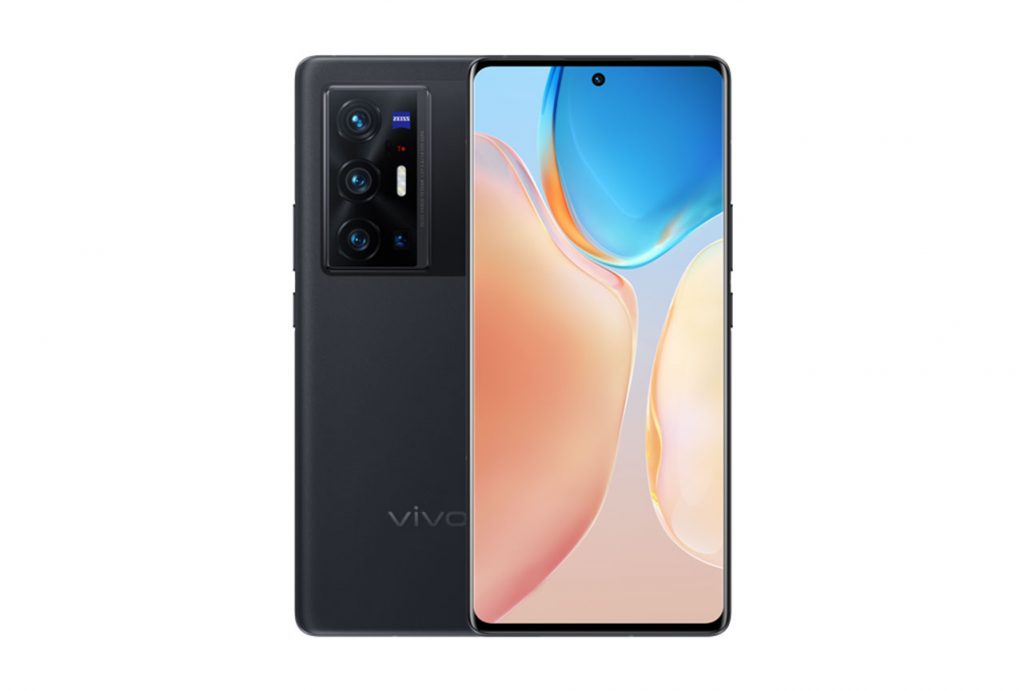
DXOMARK encourages its readers to share comments on the articles. To read or post comments, Disqus cookies are required. Change your Cookies Preferences and read more about our Comment Policy.